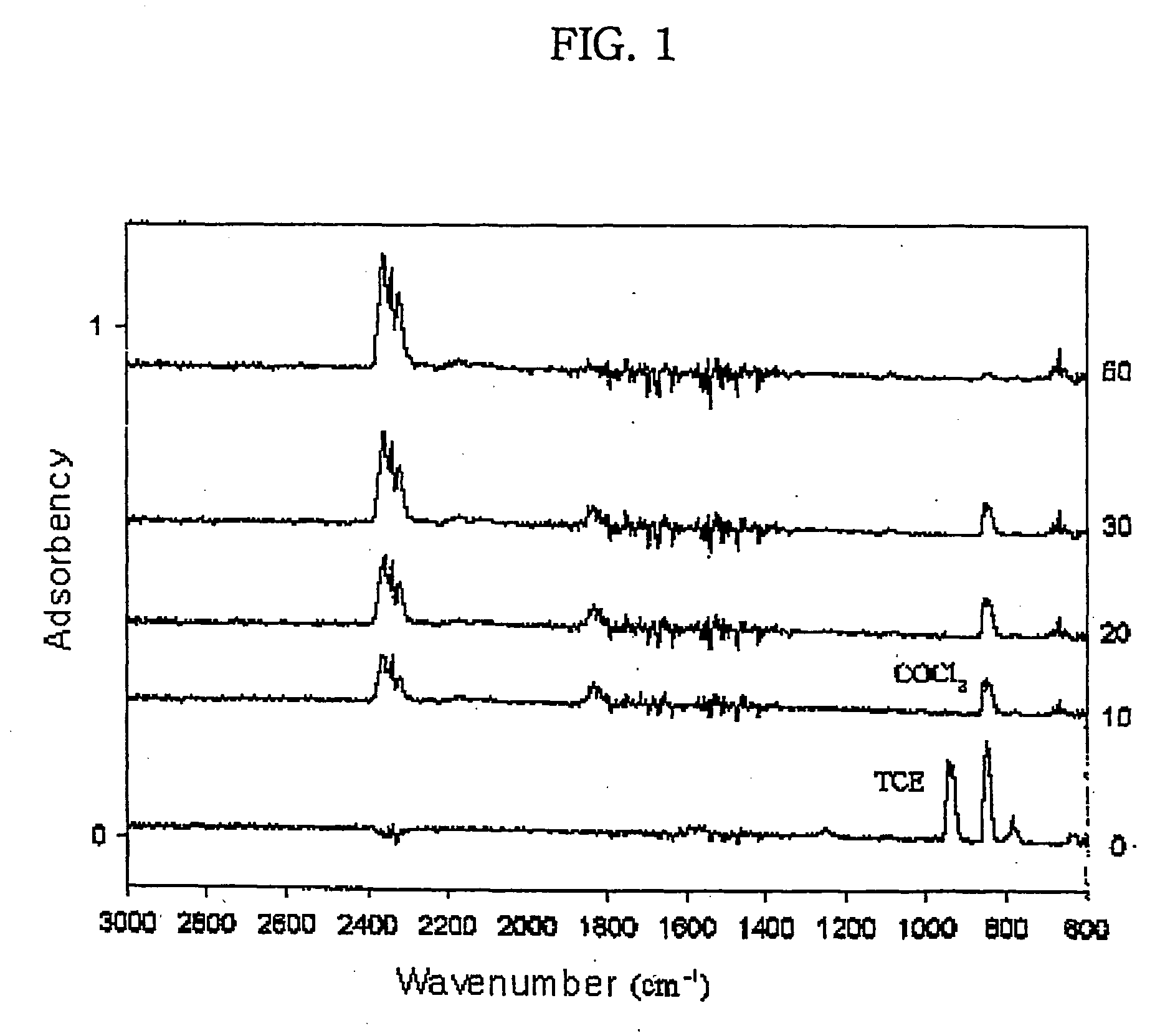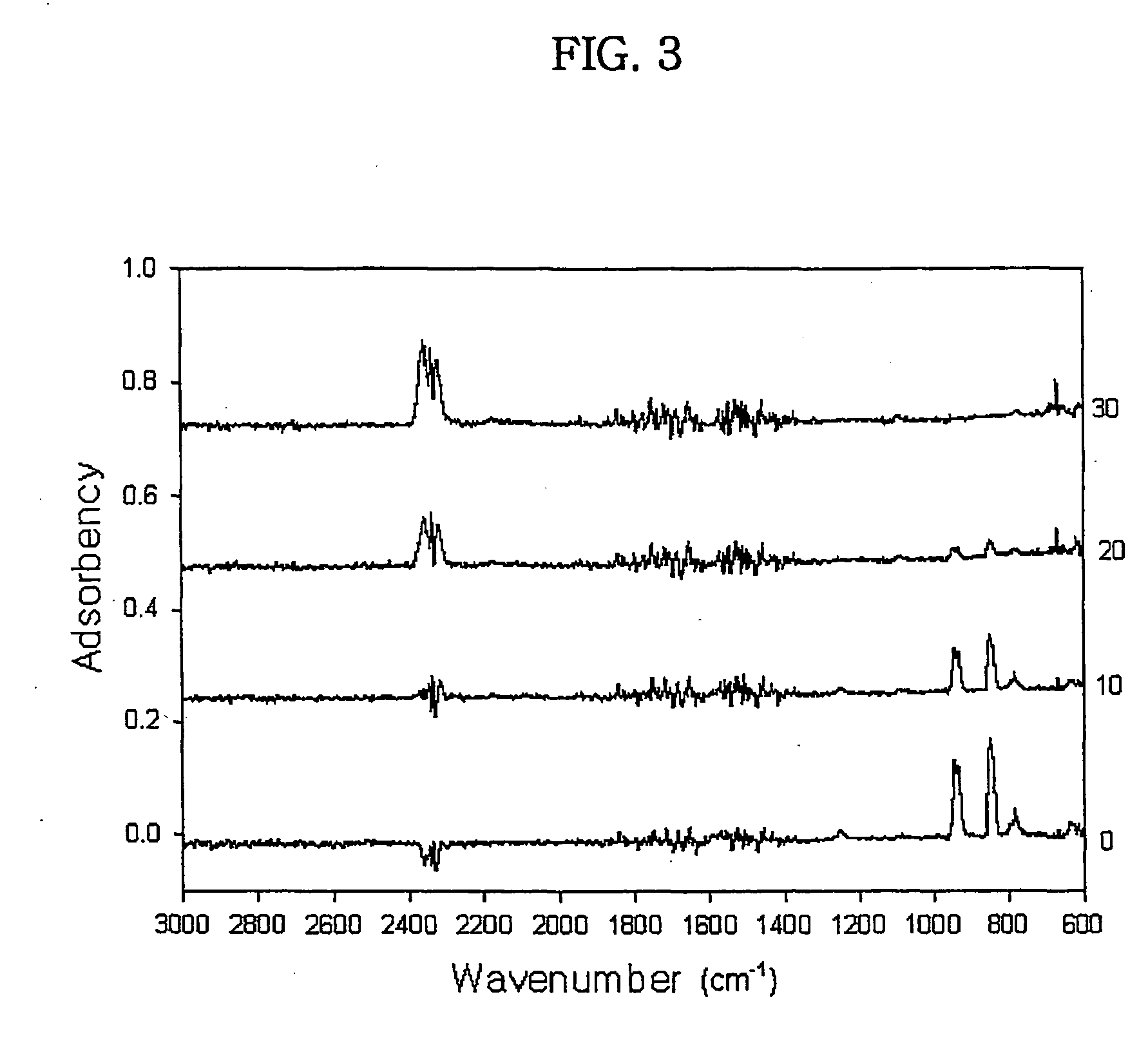Photocatalytic coating material having photocatalytic activity and adsorption property and method for preparing the same
a photocatalytic and coating material technology, applied in the direction of liquid/solution decomposition chemical coating, coating, solid/suspension decomposition chemical coating, etc., can solve the problems of requiring high cost, limiting the use of these methods, and generating secondary contaminants, so as to achieve high photocatalytic activity and prevent the delamination of secondary contaminants
- Summary
- Abstract
- Description
- Claims
- Application Information
AI Technical Summary
Benefits of technology
Problems solved by technology
Method used
Image
Examples
example 1
[0052] 5% by weight of titanium isopropoxide [Junsei Chemical Co., Ltd.], 78.8% by weight of anhydrous ethanol and 0.2% by weight of hydrochloric acid were mixed and then stirred with 1200 rpm for 20 min at room temperature. Next, 10% by weight of titanium dioxide powder [Degussa P25, Germany] was added into the mixture.
[0053] In the mixed solution, 6% by weight of talc [DUKSAN PURE CHEMICAL Co., Ltd.] was added and then treated for more than 30 min in a ultrasonic device [BRANSON Ultrasonic Co., DHA-1000], to obtain sol composition for coating.
example 2
[0054] 5% by weight of titanium isopropoxide [Junsei Chemical Co., Ltd.], 78.5% by weight of anhydrous ethanol and 0.2% by weight of hydrochloric acid were mixed and then stirred with 1200 rpm for 20 min at room temperature. Next, 10% by weight of titanium dioxide powder [Degussa P25, German] was added into the mixture.
[0055] In the mixed solution, 6% by weight of talc [DUKSAN PURE CHEMICAL Co., Ltd.] was added and then after treated for more than 30 min in an ultrasonic device [BRANSON Ultrasonic Co., DHA-1000], followed by adding 0.3% by weight of copper acetate hydrate [Junsei chemical. Co., Ltd., Japan] in the solution, to obtain sol composition for coating.
example 3
[0056] The same process as in Example 1 was carried out, except that, instead of 6% by weight of talc, 5% by weight of diatomite [DUKSAN PURE CHEMICAL Co., Ltd.] was used.
PUM
| Property | Measurement | Unit |
|---|---|---|
| diameter | aaaaa | aaaaa |
| wavelength | aaaaa | aaaaa |
| diameter | aaaaa | aaaaa |
Abstract
Description
Claims
Application Information
 Login to View More
Login to View More - R&D
- Intellectual Property
- Life Sciences
- Materials
- Tech Scout
- Unparalleled Data Quality
- Higher Quality Content
- 60% Fewer Hallucinations
Browse by: Latest US Patents, China's latest patents, Technical Efficacy Thesaurus, Application Domain, Technology Topic, Popular Technical Reports.
© 2025 PatSnap. All rights reserved.Legal|Privacy policy|Modern Slavery Act Transparency Statement|Sitemap|About US| Contact US: help@patsnap.com



